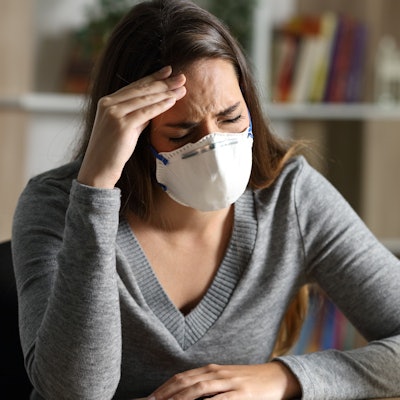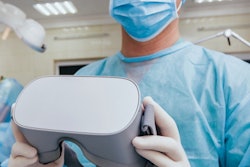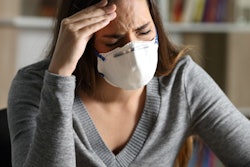
Patients with dental fear likely have anxiety and touch their faces more often, which may lead to greater spread of the novel coronavirus at dental practices, according to a study published on April 20 in BMC Oral Health.
Understanding the links between anxiety disorders and physical behavior may help prevent the spread of COVID-19 and help clinicians compose effective interventions to improve oral healthcare in these patients, the authors wrote.
"The behavior of people in the waiting room of the dental clinic may be influenced by psychological and sociodemographic factors, and this could contribute to the spread of COVID-19," wrote the group, led by Dr. Maria Carrillo-Diaz from the orthodontic and pediatric dentistry department at Rey Juan Carlos University in Madrid.
Evidence has shown that touching a mask or face results in an increased risk of SARS-CoV-2 infection and cross-contamination. People who experience general anxiety or dental anxiety often have higher heart rates, higher heart rate variabilities, and make more movements, including face touching.
Individuals who do not experience anxiety may touch their faces about 30 times in one hour; the researchers sought to determine how frequently they may touch their faces when they are in stressful environments, such as dental offices. Until now, an association between these factors and face touching has not been evaluated.
To study patient behaviors, the researchers monitored 124 adults who visited four dental clinics in Madrid during the country's lockdown between March 15, 2020, and May 15, 2020. All wore masks at the clinics. Motion sensor software was used to monitor the patients' movements while they sat in waiting rooms.
Also, patients completed the trait anxiety subscale of the State-Trait Anxiety Inventory, the COVID-19 Fears Questionnaire, and the short version of the Dental Anxiety Inventory. Pearson correlations coefficients (r2) were used to analyze the relationships between the variables.
The average time patients spent in the waiting room was about 10 minutes, and the room was empty when each patient visited. The number and duration of facial self-contacts were independently monitored, as were the number and duration of contacts made to the mask and eyes, the authors wrote.
On average, patients made about seven facial contacts, four mask contacts, and three eye contacts. The median and standard deviation scores for the patients were 22.6 ± 18.1 for trait anxiety and 19.1 ± 8.3 for dental anxiety.
When the researchers evaluated the relationships, they found statistically significant associations between the number and duration of facial, mask, and eye self-contacts with trait anxiety and dental fear. Trait anxiety was associated with higher dental fear in general (r2 = 0.261). Dental fear was associated with touching frequency of the face (r2 = 0.194), mask (r2 = 0.196), and eyes (r2 = 0.200).
The authors concluded that symptoms of anxiety and fear and sociodemographic factors could lead to more facial self-contacts in dental patients, potentially increasing the spread of SARS-CoV-2. In addition to the research having practical implications for COVID-19 prevention, it may help improve psychological intervention, the authors wrote.
"Health psychologists could attend to patients who require this with psychoeducation, relaxation techniques, rational-emotive therapy, or the use of virtual reality, so that when they arrive at the consultation, their level of discomfort is lower, and therefore facial self-contact will be reduced," they concluded.




















